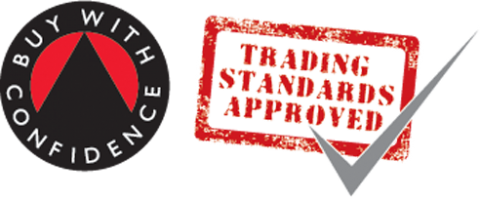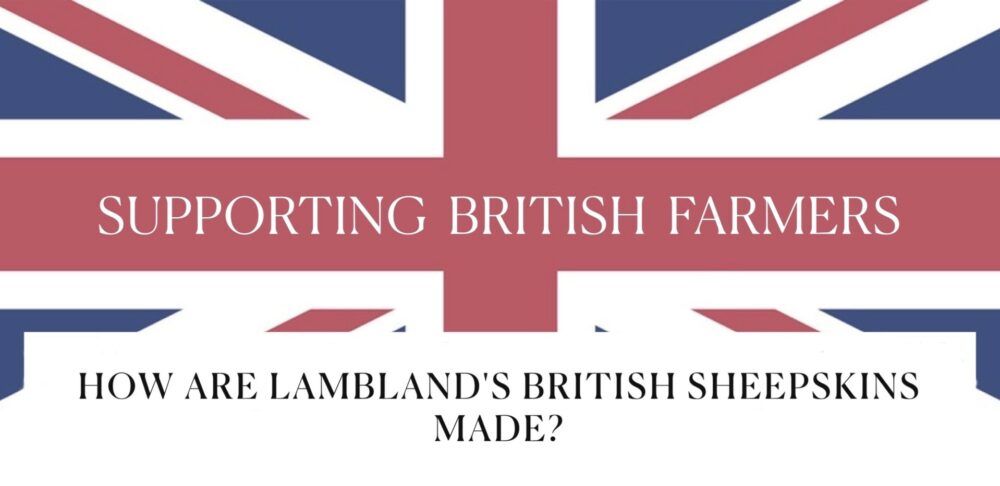
Did you know that our Tannery in South of England is one of the oldest and last remaining Tanneries in Great Britain? If you buy a sheepskin from us, you are not only supporting a third generation family business but you are also supporting a traditional tannery that has been producing sheepskins for over two hundred years, along with the many farming families who rear the livestock.
So, what goes into creating a Lambland sheepskin?
✔️ Sheepskins are sent in from the farmer, these skins are salted to preserve them.
✔️ They are then put into a large wooden vat to be washed and fleshed, this softens the skin and removes any debris or dirt.
✔️ Next, the skins are put into another bath of tanning solution where they are rotated and pickled, this process converts the skin into leather, so the hide is preserved.
✔️ If we are having a sheepskin dyed, it will then go into a dye solution, then they are spin dried (such as when you have your laundry on the spin cycle).
✔️ Once spin dried, the skins are toggle dried, this is where they are stretched out to dry. They then go through a process known as ‘caging’ which is a big tumble dryer, this softens and de-greases the sheepskin.
✔️ Once dry, the sheepskins are ironed and combed, this transforms the sheepskin into a soft, silky rug – you can see the difference the ironing and combing makes in the images below, this is the same rug!
✔️ Lastly, the sheepskins are hand-cut to shape and finished.
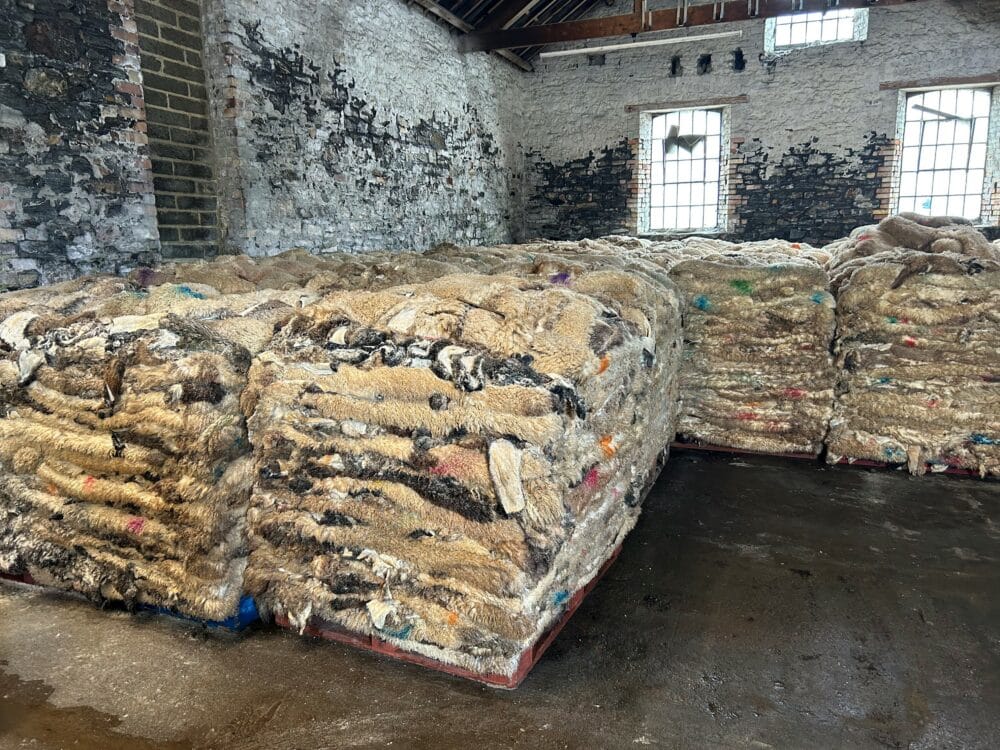
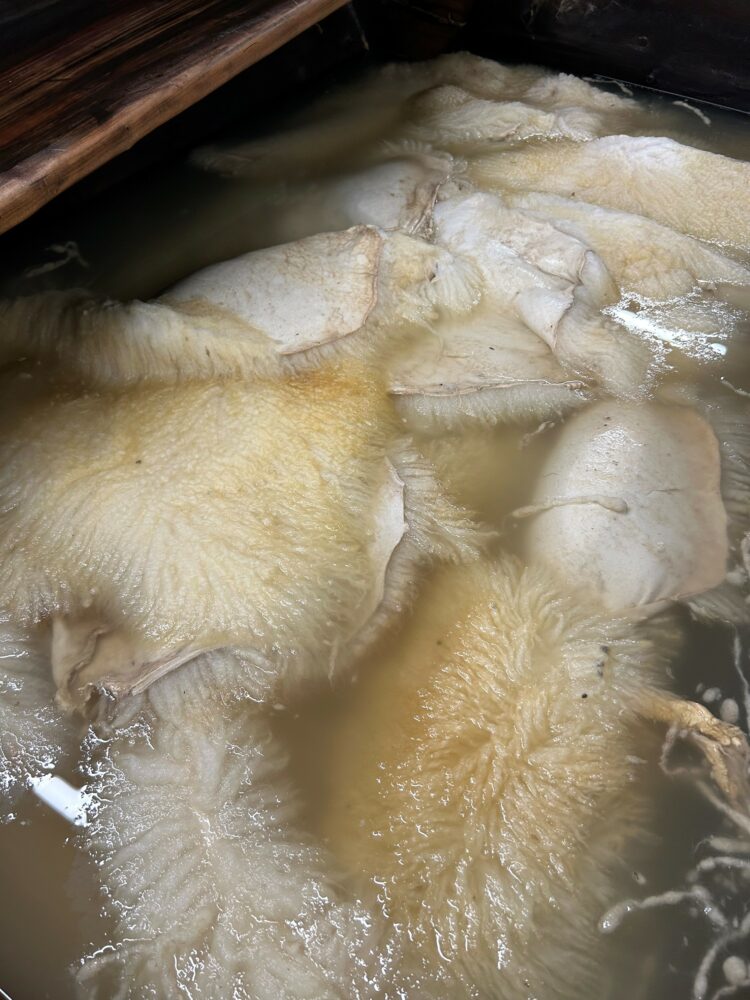
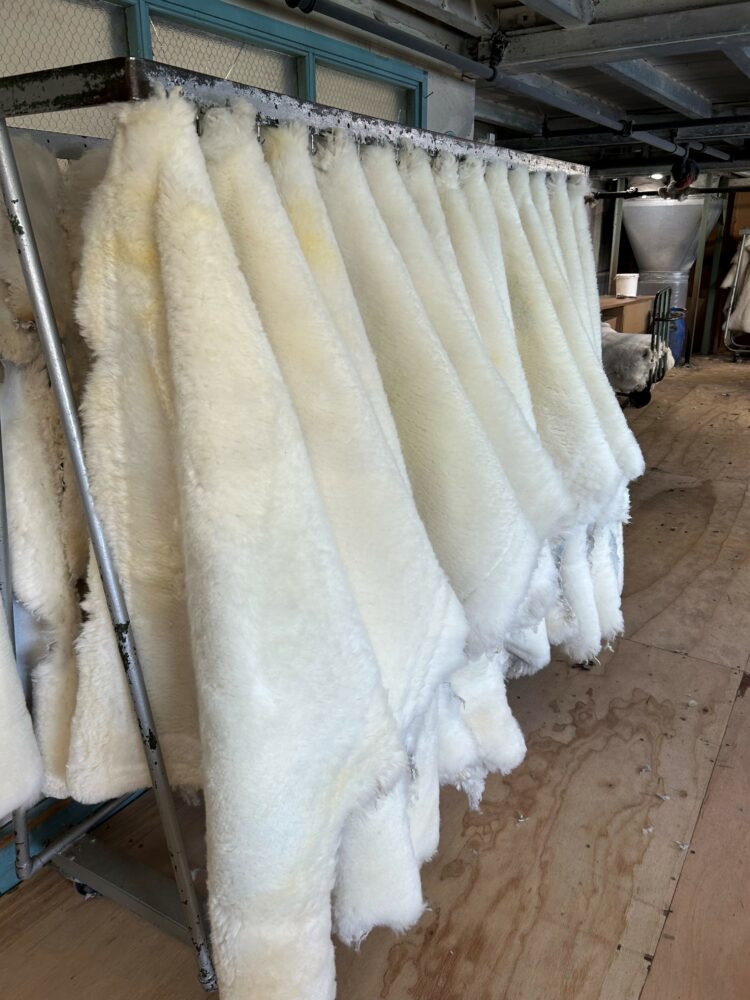
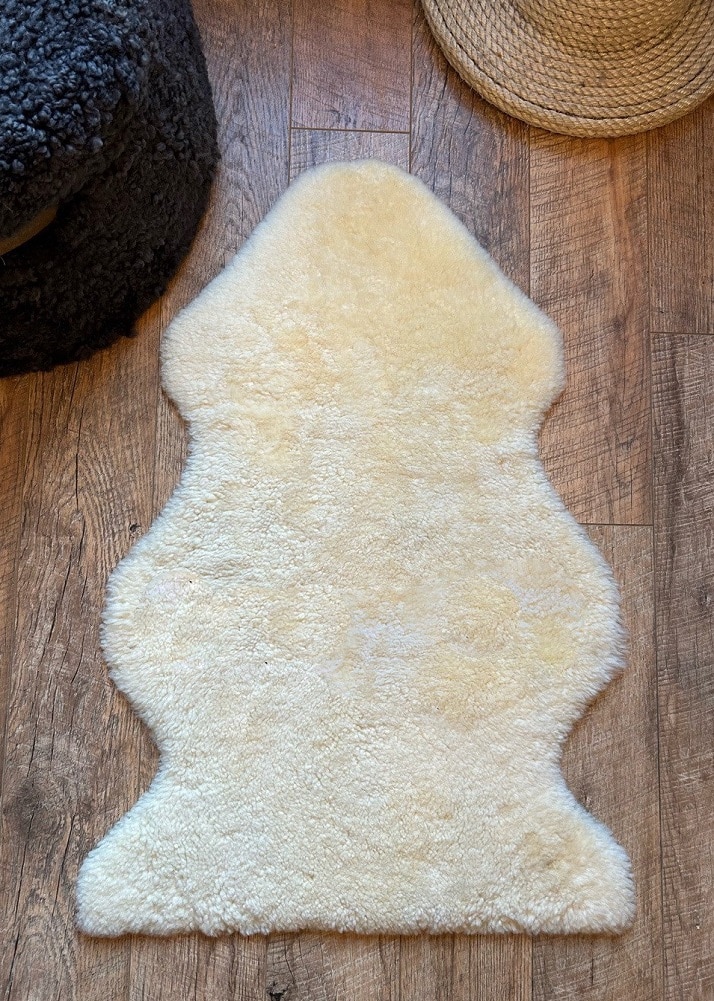
On the left, is one of our British Medical Rugs, beautifully finished and trimmed to a special wool length making this specific sheepskin safe for babies.



